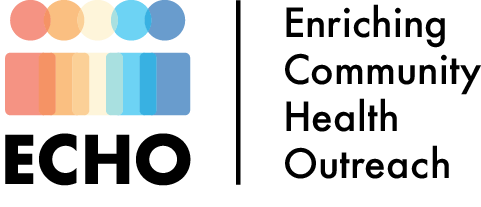HIV Stigma and Discrimination
HIV Stigma and Discrimination
Bella Hung
“Soon after I was diagnosed, my mom told me she and my stepdad had been diagnosed HIV-positive three months before. She just didn’t know how to tell anybody. We became really good friends and just went through it together, until she passed. I wish we had bonded earlier in life, but it was so good to have that family relationship at that time.” - Christian, Washington, D.C., United States, 2012. Courtesy: Through Positive Eyes/UCLA Art & Global Health Center
The movement for HIV and AIDS awareness has grown exponentially in recent years, with more emphasis being placed on prevention, care, and support. Although the stigma surrounding HIV has decreased dramatically in comparison to the atmosphere of the 1980’s, the unfortunate reality is that HIV stigma and discrimination continue to exist today, and there is still enormous room for improvement.
First and foremost, the difference between stigma and discrimination must be established. The Centers for Disease Control and Prevention (CDC) defines HIV stigma as negative attitudes and beliefs about people living with HIV, while HIV discrimination refers to the behaviors that result from those negative beliefs. Unfortunately, these can result in severe consequences on the mental health and well-being of people living with HIV. Often times, the stigma becomes internalized and those living with HIV begin applying the multitude of negative ideas onto themselves, resulting in feelings of shame and despair. Bebe J. Anderson, JD, the HIV project director at Lambda Legal in New York City writes in the AMA Journal of Ethics that an alarming amount of people in the United States have severe misconceptions or lack knowledge about how HIV is transmitted, leading many to be unreasonably paranoid and fearful about interacting with HIV positive individuals. In fact, discrimination persists even within the field of health care, the one domain where one would expect there to be more equal treatment. In a 2007 study published in Sage Journals examining reactions of health care personnel to individuals with HIV, a numerous amount of alarming behaviors were documented, including providing inadequate care, refusing to draw blood, attempting to defer the patient to other clinics, and even physically mistreating the individual. These instances of discrimination illuminate the harsh reality: those living with HIV are faced with negativity from all around their environment, whether it be from their peers or from their healthcare providers.
While it is true that America has improved in terms of recognizing and raising awareness for HIV, there is still a long way to go in terms of alleviating discrimination and stigma. These issues are even more difficult to tackle, because they can be hard to tangible measure and identify. It is important to realize that it is precisely discrimination and stereotyping that can have the most detrimental impacts on individuals living with HIV and can obstruct daily life.
Not all hope is lost, however. In September of this year, I had the opportunity to look through an exhibit at UCLA’s Fowler Museum titled “Through Positive Eyes.” The UCLA Newsroom describes the exhibit as a series of personal photo essays from people affected by HIV. The goal of Through Positive Eyes is to work towards banishing stigma; it provides a raw and unfiltered view into the lives of those living with HIV. Walking through and looking at the exhibit was an eye-opening experience for me, especially because I had not previously given a great deal of thought to how severely stigma and discrimination could affect patients with HIV. It was one of the most memorable exhibits I have ever seen at any museum, particularly because the photos were not perfectly polished or even easy on the eye, but they simply show reality as it is. I hope that society continues to raise awareness for HIV stigma and discrimination, and that together we can work towards dismantling these negative attitudes.

